Tenerife
Canary Islands Magic!
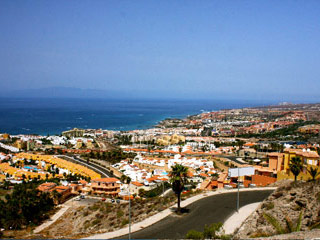

Tenerife, the largest of the seven Canary Islands, amazes by its stark contrasts: the tawny 12,198-foot Teide volcano, the tallest in Spain, surrounded by 250 miles of deep azure Atlantic coastline; fern green primeval laurel gorges behind a crater of striated lava outcrops; La Laguna, the elegantly preserved 16th century former capital on the north shore juxtaposed to thriving, sophisticated beach resorts, spas, marinas, discos and theme parks to the south. Just above the Tropic of Cancer and 130 miles off Morocco in northwest Africa, Tenerife (“the snow covered mountain”) averages an idyllic 72 degrees annually. Emerged from the ocean bottom over 10 million years ago, it was inhabited by “blond” Guanches natives, conquered by the Spaniards in 1495, and used as a final provisions station for Christopher Columbus’ monumental voyage west to America.
With Metro-Dade as a sister region, Tenerife and the Canaries claim ancestry to over 300,000 South Florida Hispanic residents, mostly Cuban or Venezuelan. As of June, Spanish-owned Air Europa now offers weekly (Saturday) direct service from MIA to Tenerife’s North Airport on a 299-passenger Airbus
A330-200 with 24 cozy Business Class seats. Nearby Santa Cruz, the island’s capital and port, shadowed by the Anaga mountains, boasts vertical shopping avenues or Ramblas framed by striking scarlet poincianas, García Sanabria Park with bamboo gardens and oversize Art Deco statuary, the imposing Baroque Torre de la Concepción church and tower, tranquil cafés on Calle de la Noria, and rambunctious Carnival in February. For modern flair walk around the startling, waterfront Tenerife Auditorium, architect Santiago Calatrava’s all-white hymn to a cantilevered “beaked” roof and intertwined buttresses.
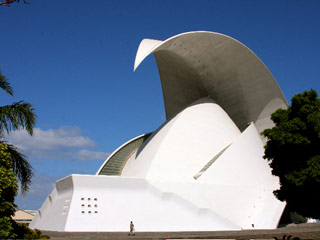
A 10-minute ride on the island’s terrific super highway leads to 500-year-old La Laguna, a UNESCO World Heritage Site and university town. The grid-like, historic center contains over 600 mudejar (Spanish and Moorish) buildings, framed stone facades, carved doorways, Canary pine-beamed courtyards, moulded ceilings, and numerous Baroque churches, convents, monasteries, sanctuaries and towers. For decorative details visit: Casa del Corregidor (Mayor’s Residence), Casa de Alvarado Bracamonte (Field Marshals’ House), the Bishop’s Palace, the Cabrera Pinto High School, and Nuestra Señora de la Concepción (1496), the island’s first parish with its marvelous cedar pulpit and belltower. Interestingly, our excellent local guide Jose Ramon Gonzalez revealed: “La Laguna is a true historical treasure chest. Look all you want! But we are a little jealous of our homes and sites. To gather and gossip we head to the square or a café. Canarians love their privacy – the courtyard is our inner sanctum.”
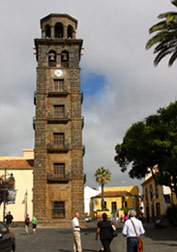
For a northern base in the Orotava Valley our group stayed in the five-star, 252-room Hotel Botanico & The Oriental Spa Garden a half hour west overlooking the popular tourist resort of Puerto de la Cruz. The six-acre property contains manicured gardens, a putting green, a bountiful breakfast buffet, and three restaurants including “The Oriental” (Thai). Their splendid adjacent spa offers Shiatsu, Ayurveda, and Reiki massages, exotic body wraps with green tea, ginger and cacao, and a stimulating 12-step circuit of thermal baths. In town visit the former fishing village harbor, the Customs House, San Felipe Castle, the black volcanic sand at Playa Jardin or enjoy stuffed spicy peppers with cod at Restaurante Casa Régulo.
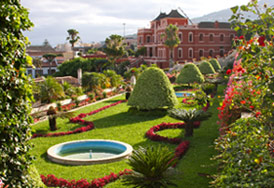
Due to the intensely rich volcanic soil and mild trade winds, tropical bananas grow hillside alongside vineyards. In nearby El Sauzal, perched dramatically above ocean cliffs, we toured the Casa del Vino La Baranda, an old finca (farmstead) with wine tasting, a video of their famous Malvasia (a favorite of Shakespeare!) and five varieties of red wine, and even a small exhibit on honey, another important island product. Above Puerto de la Cruz amidst banana plantations the town of La Orotava utterly charms with steep cobblestone streets, La Concepción Church (amazing silver relics), ancient homes, craft shops, and a blazing citywide carpet of flowers on Corpus Christi Day (early June).
West along the TF-5 motorway watch surfers at El Socorro beach below Los Realejos or swimmers in the lava rock holes and coves in Garachico, Tenerife’s main port until 1706 when it was buried by a volcanic eruption. Nearby Buenavista Golf, designed by Seve Ballesteros, is ingeniously built with spectacular views of the ocean, cliffs, and ravines highlighted by five greens that directly face the jagged beaches and rocky coastline. The rugged landscape, part of the Teno Rural Park, once housed the royal family of the indigenous Guanches.
If the north coast grips the visitor visually, nothing can compare to the insistent, savage beauty of Mount Teide. As you climb the fragrant Canarian pine forests an eerie mist hovers delicately above the glimmering towns and ocean. At night a cluster of international white-domed telescopes at Izaña Observatory probe the pristine sky. After a few switchbacks you enter Las Cañadas, the stupendous 10-mile diameter caldera or crater bowl with rocky vantage points like Roques de Garcia, the austere valley of Llano de Ucanca, and imposing 8,900-foot Guajara, Tenerife’s second highest peak. Weather permitting, a very busy cable car reaches La Rambleta at 11,663 feet and the final, vigorous 200 meters are permitted on foot with a permit. As you absorb the sheer immensity of one of the world’s most fascinating and ancient eco-systems, what might appear bleak or barren quickly reveals subtle shifting colors, textures, perspectives and even sounds. To better explore the Teide National Park luxuriate at the 27-room Hotel Villa Alba & Spa in the pine forest of nearby Vilaflor, the island’s highest town.
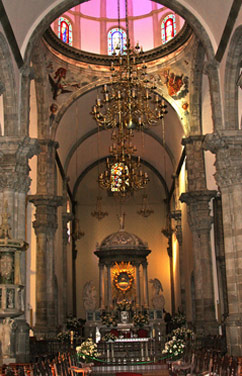
Descending Mount Teide the hot, dry, breezy southern beach resorts of Costa Adeje come quickly into focus. We stayed slightly to the northwest at the brand new, 5-star Gran Meliá Palacio de Isora, a 609-room palace of pavilions, central colonial plaza, towers and gardens with a breathtaking, nearly 1000-foot salt water swimming pool that parallels the ocean facing the island of La Gomera. Besides six restaurants and bars, their 59 adult-only Level Service suites and villas provide butler service, free internet, and private pool. Further south on the coastal road the peach-pink Abama Resort features a gorgeous 6,858-yard golf course with 25,000 palm trees and 22 ponds.
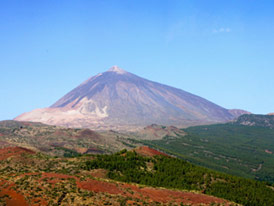
The Costa Adeje and Playa de Las Americas are booming with tourism. Day activities can vary from windsurfing and diving to whale watching and sailing. I fished for bonito on the “Polilla II” with Big Game Fishing Las Galletas and its Dutch captain Eric Einarson who showed me pictures of blue marlin caught off La Gomera. For family “water” fun Siam Park has a “wow” 100-foot free-fall Tower of Power and their Wave Palace creates the world’s biggest artificial waves at nearly ten feet. Luxury resorts abound: the whitewashed Moorish-style Hotel Jardin Tropical, the beige five-star Iberostar Anthelia Grand Hotel, and the sumptuous Gran Hotel Bahia del Duque Resort with ten restaurants and private beach. You can even go clubbing at South Beach-like locales like Liquid, Monkey Beach Club and El Faro.
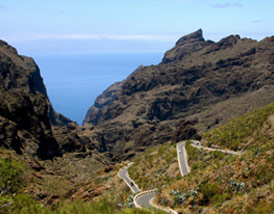
On our last day we headed up into the hills to the 133-acre Bodegas Frontos vineyard for a cooking course, lunch and tour of their wine press, barrels, production hall, and cellar. Canarian cooking uses great fresh ingredients from their abundant soil with Mediterranean, Atlantic and African influences. With a mortar and pestle our host chopped and pounded red and green “mojos” (paprika and green coriander sauces) and then boiled potatoes in sea salt for “papas arrugadas” (wrinkled potatoes). At lunch we continued with a simple green salad tossed with fresh sautéed codfish followed by tuna and pork in a spicy sofrito sauce. For dessert we devoured a delicious corn bread pudding. On the terrace below Mount Tiede I sipped their lovely red Frontos Tinto Clasico and gazed at undulating hills of grapes descending towards the shimmering blue Atlantic beyond. Tenerife is certainly an island of perfect contrasts!
For tourism: www.visitenerife.com; transportation: www.aireuropa.com; hotels: www.hotelbotanico.com and www.gran-melia-palacio-de-isora.com; golf: www.buenavistagolf.es


